According to many shooters, the Glock 17 is the pistol that forever changed the direction of the handgun industry. While striker-fired and polymer framed pistols existed before the G17, they were few and not at all popular.
Gaston Glock changed all that with this 9mm semi-automatic handgun.
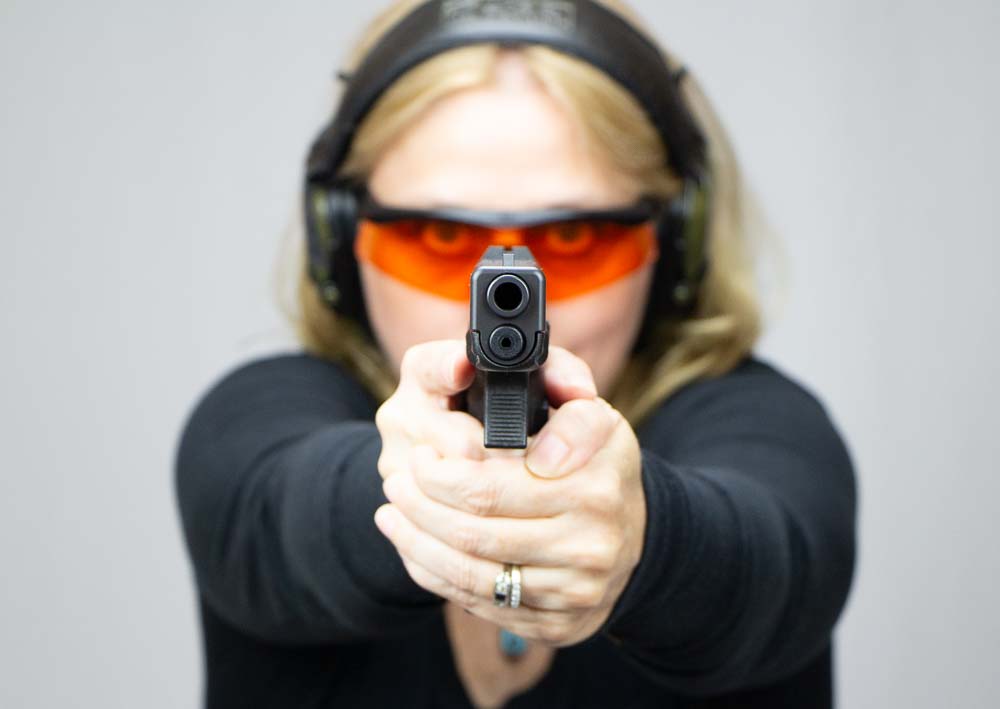
Fairly quickly, U.S. law enforcement agencies began adopting the pistol, and the American public followed suit. Now it seems the gun is the universal duty pistol found in holsters of good guys all around the world.
But, it’s changed from the original. For the better, I think, but I decided to get one on the range and see how it runs. Welcome to my Glock 17 review.
General Information on the G17
During my hands-on time with the Glock 17, I immediately recognized – or more correctly, remembered – several prominent features that assert why this model is a favored sidearm among law enforcement and serious shooters alike. Renowned for its reliability, I can attest that in my multiple decades of experience, rarely have I had to contend with malfunctions or misfeeds when putting this weapon through its paces.
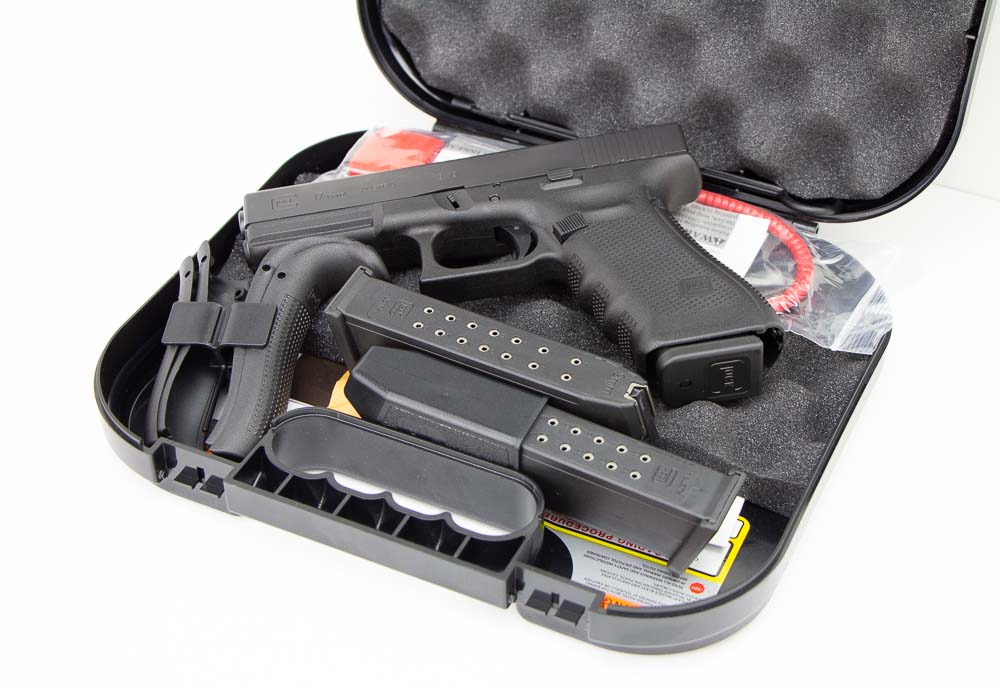
Holding the Glock 17 firmly in my grip, the ergonomics are commendable but not without room for improvement. The rough textured frame ensures the pistol stays rooted in hand during rapid-fire exercises.
However, I’ve noted that shooters with smaller hands might find the grip a tad large for comfort. Glock’s modular backstrap system, included in later generations, allows for some customization, but it’s not nearly as customizable as the HK VP9, SIG P320 or Springfield Armory Echelon – all excellent duty pistols as well.
The pointability of the Glock 17 is almost instinctual; it aligns effortlessly with the target. I know some people don’t like the standard Glock “dot in box” style sights. But, I find them quite adequate for quick target acquisition. With practiced shooters in mind, these elements come together smoothly, delivering consistent accuracy, a cornerstone in selecting a reliable self-defense weapon.
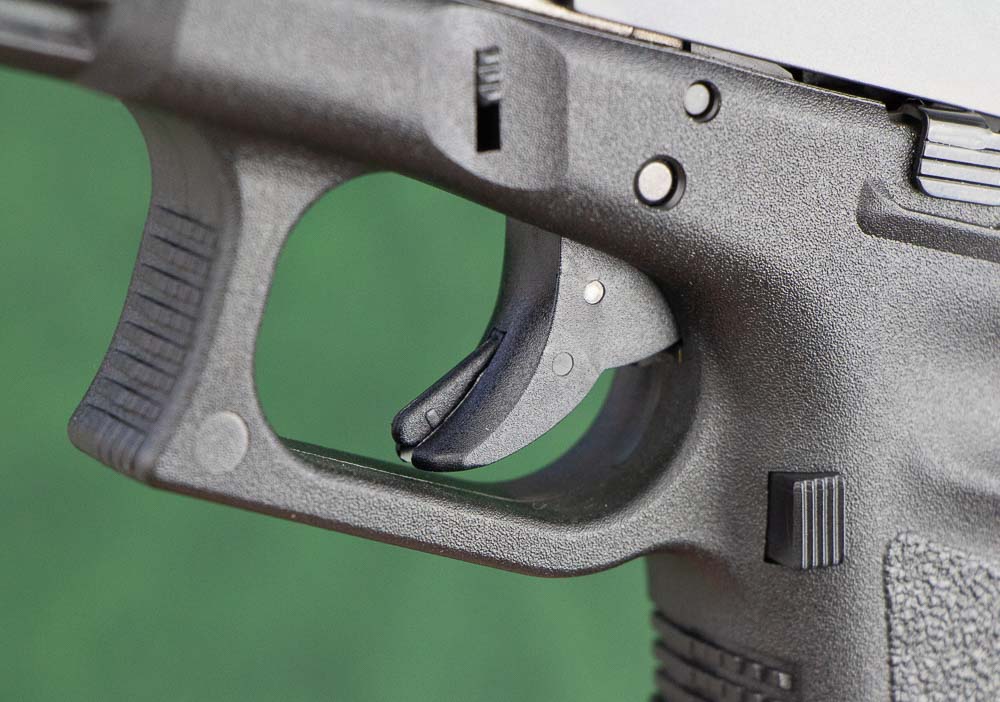
Moving on to the trigger – while Glock’s “Safe Action” system allows for a consistent trigger pull round after round, though some may argue the trigger could do with a finer touch. The pull is characteristically spongy, a long-standing Glock hallmark, but it breaks predictably time after time, a feature I’ve grown to trust in tense situations. In other words, I don’t think it is perfect, but it is more than “good enough” for self-defense and duty work.
Capable of a loading 17 rounds in the standard magazines, this is generally ample for a duty or self-defense weapon. Furthermore, the weight is nicely balanced, which contributes to reduced shooter fatigue – a detail not to be overlooked during extended training sessions. Larger capacity magazines (as well as 10-rounders for restricted states) are also available.
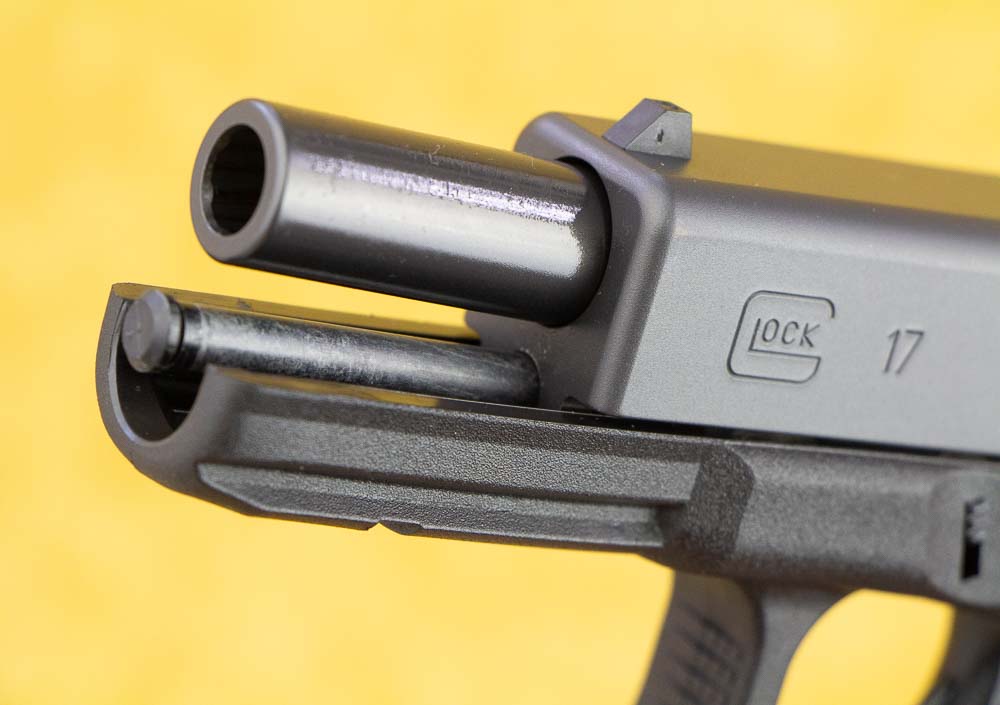
The takedown process for maintenance is straightforward. Regularly, I’ve instructed novices and pros alike on the simplicity of field stripping this firearm, and the design permits swift disassembly for cleaning without the need for tools, a godsend in the field. At the risk of causing some disjointed noses – it’s a far better takedown system than the traditional 1911.
Internally, the reliability is bolstered by the durable construction and the lack of superfluous parts, reflecting Glock’s design philosophy of simplicity and efficiency. This ease of maintenance extends the life of the weapon significantly – a reminder why this staple of the Glock family is seen so frequently at the range and on duty belts. Keep it reasonably clean and oiled, and it will serve you when you need it.
Glock 17 Specifications
- Caliber: 9x19mm
- System: Safe Action
- Barrel length: 4.5″
- Weight with empty magazine: 24.9 oz
- Weight with loaded magazine: 32.3 oz
- Magazine capacity: Standard: 17; Optional: 19/24/31/33
- Trigger pull: 5.4 lb
- Overall Length: 7.9″
- Overall Width: 1.3″
- Slide width: 1.0″
- Height including magazine: 5.5″
Range Time with the Glock 17
Yesterday, as the early morning range echoed with the first rounds, the Glock 17 was in my hands once again. Stepping onto the line, magazine loaded to capacity, I settled into the familiar routine. It was time to put this dependable workhorse through its paces.
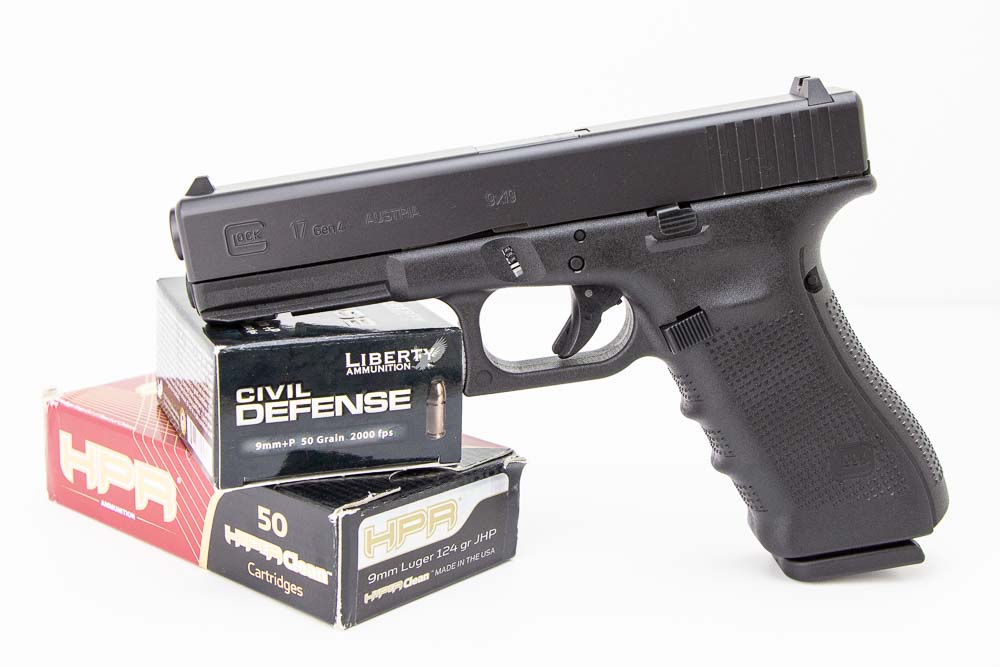
The first trigger pull was as crisp as a cool autumn morning, with the handgun’s reputation for good accuracy glaringly evident. My target, set conservatively at 15 yards, might as well have been right before me. The Glock 17 obediently punched holes near the center with a faithful consistency that spoke to its well-established lineage. To be honest, I expected the Glock to perform flawlessly, and it robustly lived up to my solid expectations.
There is, of course, modest recoil. Not a gratuitous kick or a shy pat on the hand – but a modest, firm handshake acknowledging your control over the firearm.
Even as I unloaded rounds downrange, the notable mitigation of fast follow-up shots spoke to the gun’s ergonomic handling. This stands as a testament to the balanced design, which has been diligently refined over Glock’s storied history. Each follow-up shot reliably fed into the chamber with metronomic precision, ready to execute its job without drama or flourish.
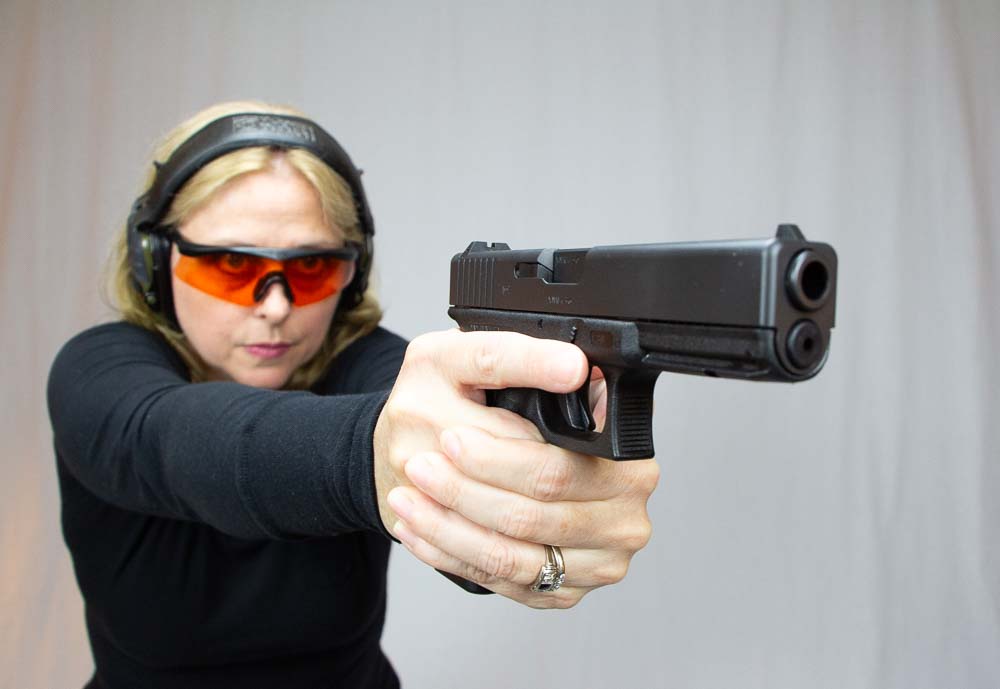
Continually cycling rounds through, the Glock 17 maintained complete reliability. No fuss. No malfunctions. Heat built up in the barrel, the smell of gunpowder lingering like a potent incense – yet still, there was no hint of any mechanical concern, even faintly, which could taint my live-fire session. Whether in the gritty rainfall of a cold winter morning drill or the oppressive heat of a mid-summer qualification day, I knew I could trust this model to be a steadfast ally in moments defined by dire urgency.
This range day was, much like my narrative with the Glock 17, uneventful regarding surprises and rich in predictable competence. As rounds fed cleanly from magazine to barrel, and ejected casings cartwheeled into oblivion, the ceaseless confirmation of the Glock’s reputation for reliability felt like a dependable beat – never skipping, never faltering.
Settling into the final magazine, I deliberately focused on the simple elements: the tactile grip confidently hugging my palm, the uncluttered sight picture drawing my eyes with ease, and the labored breath of concentration filling the diminishing silence between shots. The Glock 17 reaffirmed, confidently and without frills, its role as a core firearm choice for self-defense – true to form, diligent in function, and stark in its proficiency.
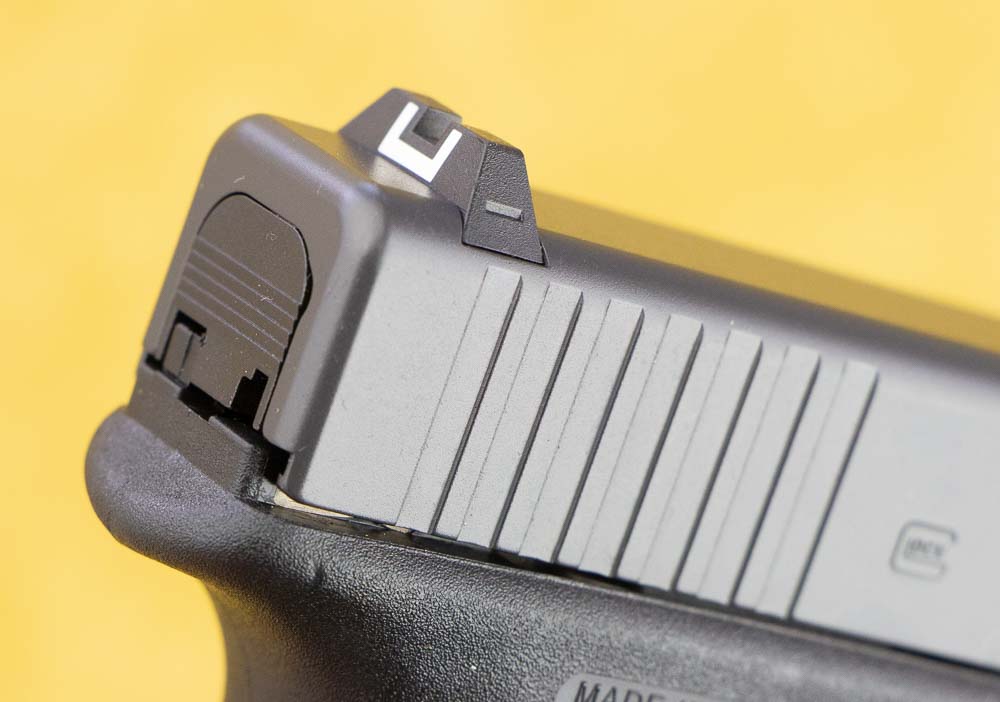
Wrapping up, I logged my observations, noting little that I hadn’t documented or experienced before. Sleek efficiency married to stoic reliability – that’s the Glock 17. For the enthusiast looking to trust their welfare to a pistol devoid of unpredictability but generous in steadfast service, one needn’t look further.
9mm Ammunition Performance
Here’s a look at how some different 9mm loads ran in the G17 Gen4.
| Load | Velocity | Energy |
|---|---|---|
| Federal 9BPLE 115 gr +P+ | 1,309 fps | 438 ft-lbs |
| Federal Hydra-Shok 135 gr JHP | 1,063 fps | 339 ft-lbs |
| Hornady Critical Duty 135 gr +P | 1,065 fps | 340 ft-lbs |
| HPR Ammunition 124 gr JHP | 990 fps | 270 ft-lbs |
| Liberty Ammunition 50 gr JHP | 2,086 fps | 483 ft-lbs |
| Remington UMC 115 gr JHP | 1,131 fps | 327 ft-lbs |
| Speer Gold Dot 124 gr JHP | 1,007 fps | 279 ft-lbs |
| Winchester “White Box” 115 gr FMJ | 1,135 fps | 329 ft-lbs |
Final Thoughts
The Glock 17 is generally considered to be the standard duty pistol to which all other pistols are compared. To me, it is obvious why. The guns have about 40 years of service behind them with an excellent reputation.
This G17 was every bit as good as the prior Glock 17s that I have owned and carried. I have no hesitation in recommending this pistol to anyone who likes it.
If, however, you are open to other pistols, I recommend checking with your local gun shop to see if there is something you might like a little better. I’ve had nothing but positive experiences with the HK VP9 and the Smith & Wesson M&P9. Likewise, I’ve found the SIG P320 to be a reliable, accurate shooter also.
Currently, I’ve got a Springfield Echelon that I really like. So far, it has been bulletproof reliable and easy shooting. And as far as red dot optics go, it has a universal mounting system that lets you quickly connect most optics without needing an adaptor plate.
Bottom line: there are a lot of great 9mm pistols available right now, and the Glock 17 is definitely on my short list of recommendations.